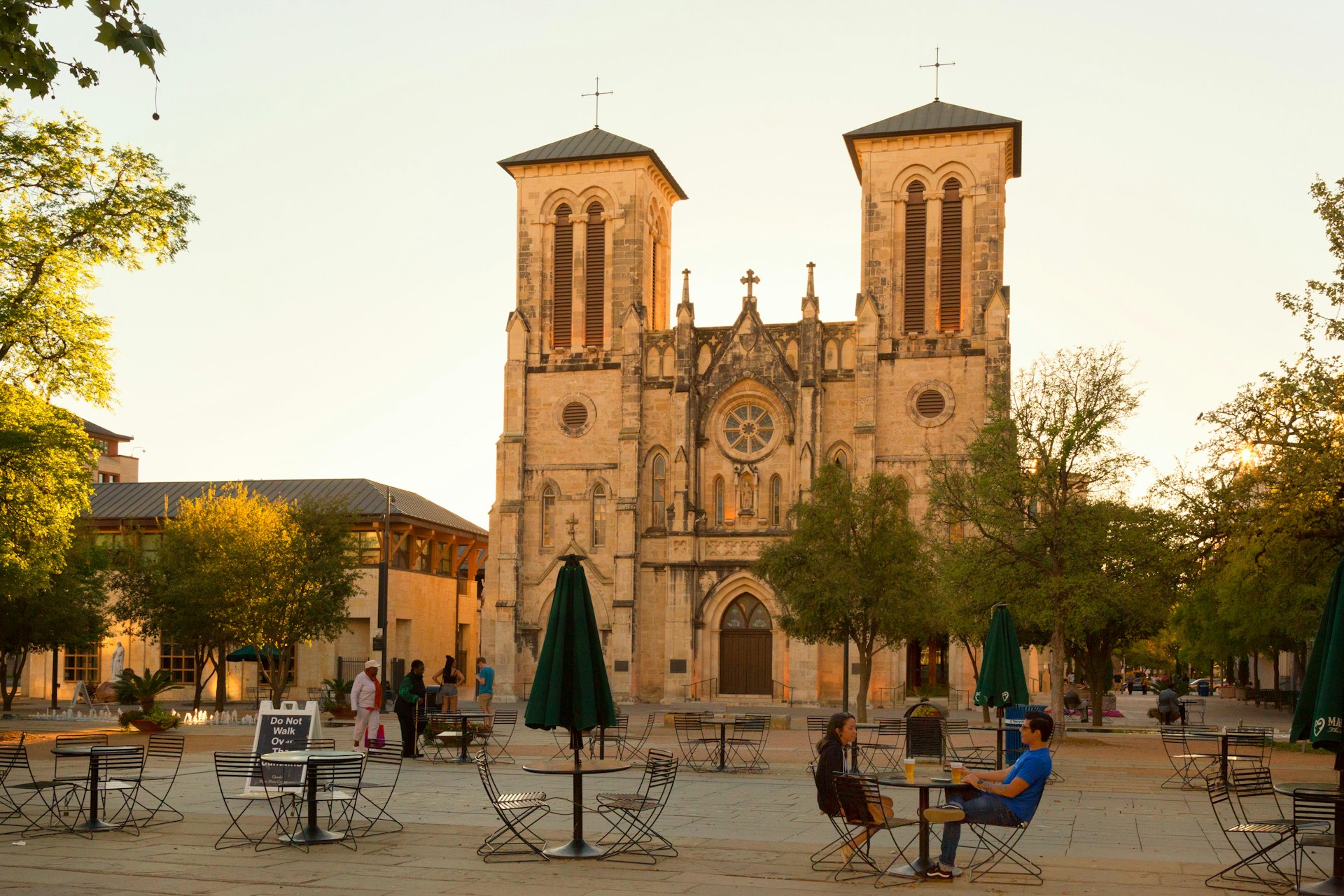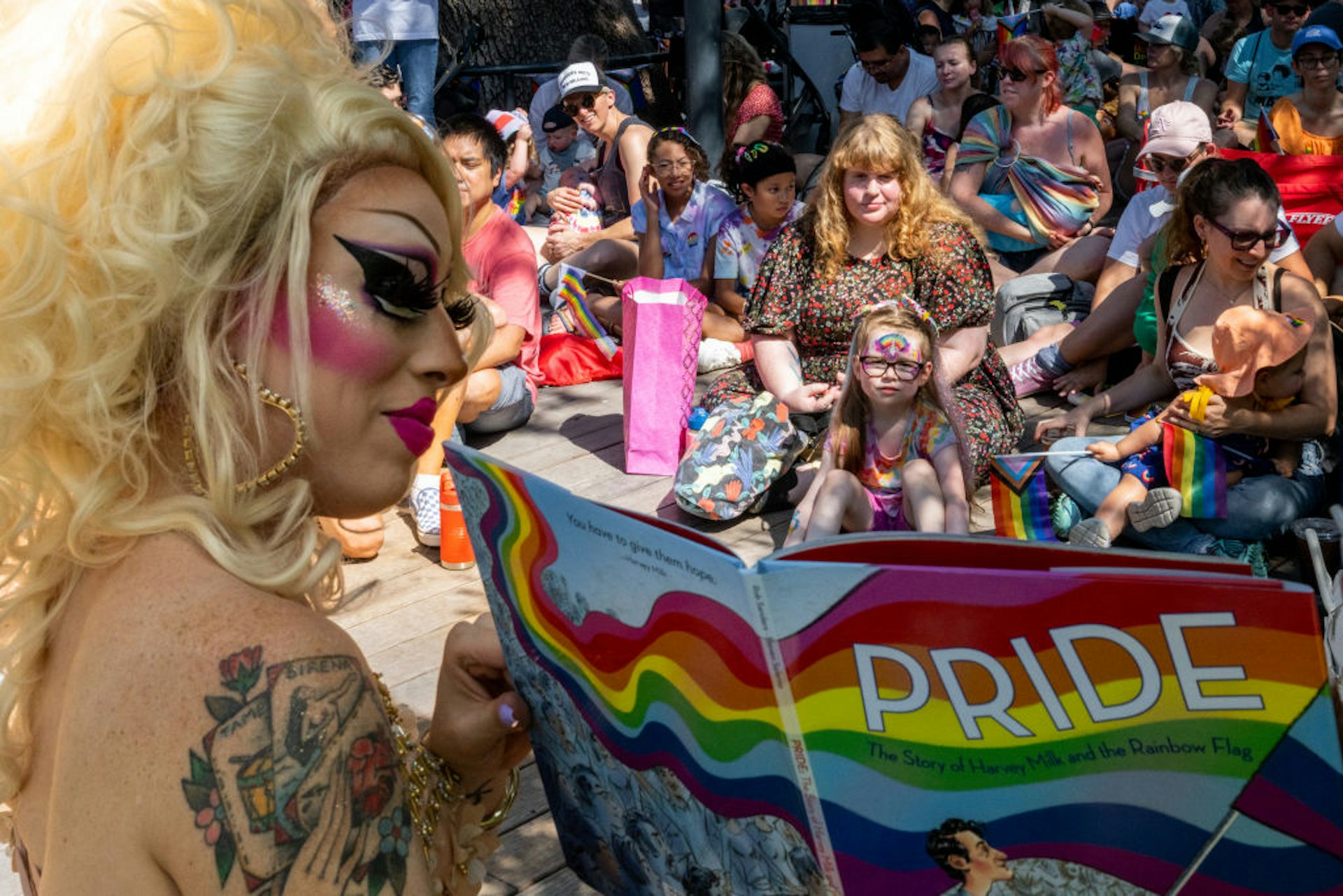You’d think marrying a Texan and watching hours of unofficial documentaries about Beyoncé, the queen of Houston, would serve me well for a move to the Lone Star State. Alas, little could prepare me for what was to come.
I spent much of my first few months in cringeworthy scenarios: discovering meal options were either large or extra large; suffering severe heat rashes because I ventured outside past 10 am in July; seeing my first ever gun – followed by the first time I ever heard one fired (on a ranch where you gotta keep them coyotes at bay). Yet there were many super-sweet times too – and it’s those oversized surprises that make life in Texas fantastic. Who doesn’t love unlimited carbonated drink refills? Or tubs of ice cream the size of a sink? As the state’s saying goes: ‘Everything’s Bigger in Texas’ – but that doesn’t apply only to the food.
Bigger than the whole of France, the US’s second-largest state has a wide range of landscapes to explore: from the Chihuahuan Desert to Texas Hill Country’s natural springs, via the vibrant cities of Austin and San Antonio. With more than 30 million living here – four million more than the whole of Australia – there’s also a lot of folk to meet, too. So whilst there’s a bunch of logistics to consider when traversing the state, there are plenty of things to know before you go, too. Here are 10 pointers for visiting Texas for the first time – by a long-term resident who found things out the hard way.
1. Texas is more inclusive than it perhaps appears
The first question I’m always asked is about discrimination in Texas. Are racism, homophobia and sexism as rife as the state’s reputation suggests? On the surface, things look bad. In 2023, Texas lawmakers passed or proposed a slew of restrictive LGBTQI+ legislation. FBI data also points to increases in racist, homophobic and religious hate crimes across the last decade. Some of my own experiences reflect that. I’ve had gay friends go to Christian conversion camps and heard racist remarks made by professional, educated people.
However, despite what’s happening within the government, the sentiment isn’t followed across the board. More than 70% of Texans support anti-discrimination laws for LGBTQ people and younger generations in the big cities, such as Millennials and Gen-Z, are especially progressive.
LGBTQI+ travelers and people of color will find supportive allies in Houston, known for its huge ethnically-diverse communities; Austin, which has a tight-knit queer community; and Dallas which teems with female leaders like the Executive Vice President of the Dallas Cowboys and the brilliant Anne Chow, who became telecommunications company AT&T’s first woman-of-color CEO. Not everyone in Texas has a Trump flag on their lawn.
2. Cars are essential
Despite being the state with the largest railroad mileage in the US, and its three major cities of Dallas, Houston and Austin connected by upward of 30 flights a day, most visitors still need a car in Texas.
The state is ginormous – and so are its cities. Dallas Fort Worth and Houston are so spread out, that you’ll need your own wheels to reach the main attractions. For example, if you’re staying in Dallas’ entertainment district Deep Ellum, it’s a 30-minute drive to the AT&T Center to catch a Cowboys game. San Antonio is similar. Only the Riverwalk area is truly walkable. Venture any further and you’ll need a car.
It doesn’t help that public transport in Texas is often limited and inconvenient. Greyhound bus stations aren’t always downtown, and those that are – like Dallas and Fort Worth– are in areas you don’t want to be walking. Luxury bus service Vonlane offers an excellent but expensive alternative between major cities. A car beats the lot.

3. Texas weather is extreme
From brutal summers – we’re talking 110°F (43°C), where it’s tough to leave the comfort of the air-con without swelling up or getting a heat rash – to sudden stinging, snowy winters, the weather in Texas can be extreme. The best time to visit is November and December or March and April when you can get away with wearing flip-flops and shorts on most days.
In summer (June to September), do as the locals do: venture outdoors ultra early, before 10 am, or long after the beating sun has set at night. Or head indoors where most activities are air-conditioned. Temperatures in January and February can dip to 36°F (2 °C), so expect ice and snow. Like much of the US, Texas also has a hurricane season (June to November). The eastern side of the state and coastal towns are most at risk during this time. Check weather advisories before traveling.
Allergy sufferers should also be aware of Cedar Fever which starts at the end of winter through to spring, peaking January to March. Even strong allergy relief struggles to beat it.
4. Texans love cows and tequila
There’s a reason barbecue takes center stage in Texas’ Culinary Hall of Fame: the state is famous for its cows. Fort Worth once had so much cattle that it earned itself the nickname ‘Cowtown’. Today, Texas has the largest beef and dairy industry in the US. The best place to try juicy, barbequed brisket depends on who you’re talking to. Lockhart is the self-proclaimed ‘Barbecue capital of Texas’, but pull up to almost any local pitmaster with a weekend line (try La Barbecue in Austin), and the meat usually falls right off the bone.
Texans love their dairy too, especially ice cream. Seek out Bluebell ice cream (sold by the half gallon for around $8 at H-E-B supermarkets). It sure is delicious. As for drinking, it’s all about tequila here. A frozen margarita is a surefire way to fan down any Texan. Get them from a hole-in-the-wall taqueria.

5. Expect excellent bang for your buck
‘Everything’s bigger in Texas’ always rings oh-so-delightfully true for food, drink, and accommodation. While prices are in line with the rest of the US (about $6-8 a pint of beer; $12-$26 a pizza pie), you generally get more of whatever is being ordered: A taco overstuffed with cheese; a generous slice of cake; 250ml glasses of wine; and cocktail pours that make anyone a cheap date. As for hotels, expect to spread out. Rooms and rentals are usually twice the size of anything in NYC – and they’ll come with a pool.
6. Tipping is getting out of control
Since COVID-19, tipping culture has gotten out of control in the US. Tipflation – the idea that industries outside of bars and restaurants now ask for gratuities – is a hot topic in Texas, where tipping in restaurants is already at a minimum of 20%. Now, though, you’ll see requests for tips in grocery stores, at live performances (with audiences asked to tip ballet dancers), and even in parks (where you can tip a hiking trail).
Some locals are so fed up that they’re only supporting businesses that pay their staff liveable wages. Thai Fresh, for example, pays its employees a higher wage with benefits like vacation, sick leave, and health insurance, thus abolishing tipping.
7. You’ll get used to all the taxidermy
Trophy hunting is a huge deal in Texas and you’re likely to see more stuffed skins here than anywhere else outside a natural history museum. Popular spots like San Antonio’s Esquire Tavern have the heads of giant bison dangling above its tables. Stay here long enough, though and you will get used to the stuffed lions, giraffes, deer, crocs, birds, and zebra.

8. You can wear regular clothes and fit right in
You might think everyone in Texas is strutting around in cowboy hats and boots, but outside of rodeos and ranches, few people do. Much like you don’t see Scottish men in kilts 24/7 or all the women in Kyoto dressed as Geishas, not everyone in Texas is a cowboy. You can look like a Texan just in a plain ol’ T-shirt and jeans.
9. Southern hospitality is infectious
Service with chit-chat and a smile? You got it. Texans are a chatty bunch, and a friendly greeting is universal across the state. It can feel strange at first but soon you’ll be the one striking up a conversation in the elevator, the coffee shop, or the park. Traveling alone? You’ll have new friends at the bar in no time. Single and ready to mingle? There will be plenty of opportunities. Broke and thirsty? Hello, free tequila shot.

10. Be extra careful speaking about religion and politics
Many Texans are deeply religious, this is America’s ‘Bible Belt’ after all. There may be a growing atheist population but most locals are Christian and conservative. Be careful about voicing your opinions on women’s rights, gun reform, drag queens or even astrology.
11. You are going to see guns
As of 2021, Texas law allows people to carry handguns in public without a background check, license, shooting proficiency test or any legal or safety training. So in short, there’s sky high chance of seeing a gun. In 2023, Texas had the second most mass shootings of all 50 US states, so stay vigilant and download the Citizen App to emergency alerts sent to your phone. The app often has news about gunmen on the loose before it hits the headlines.
